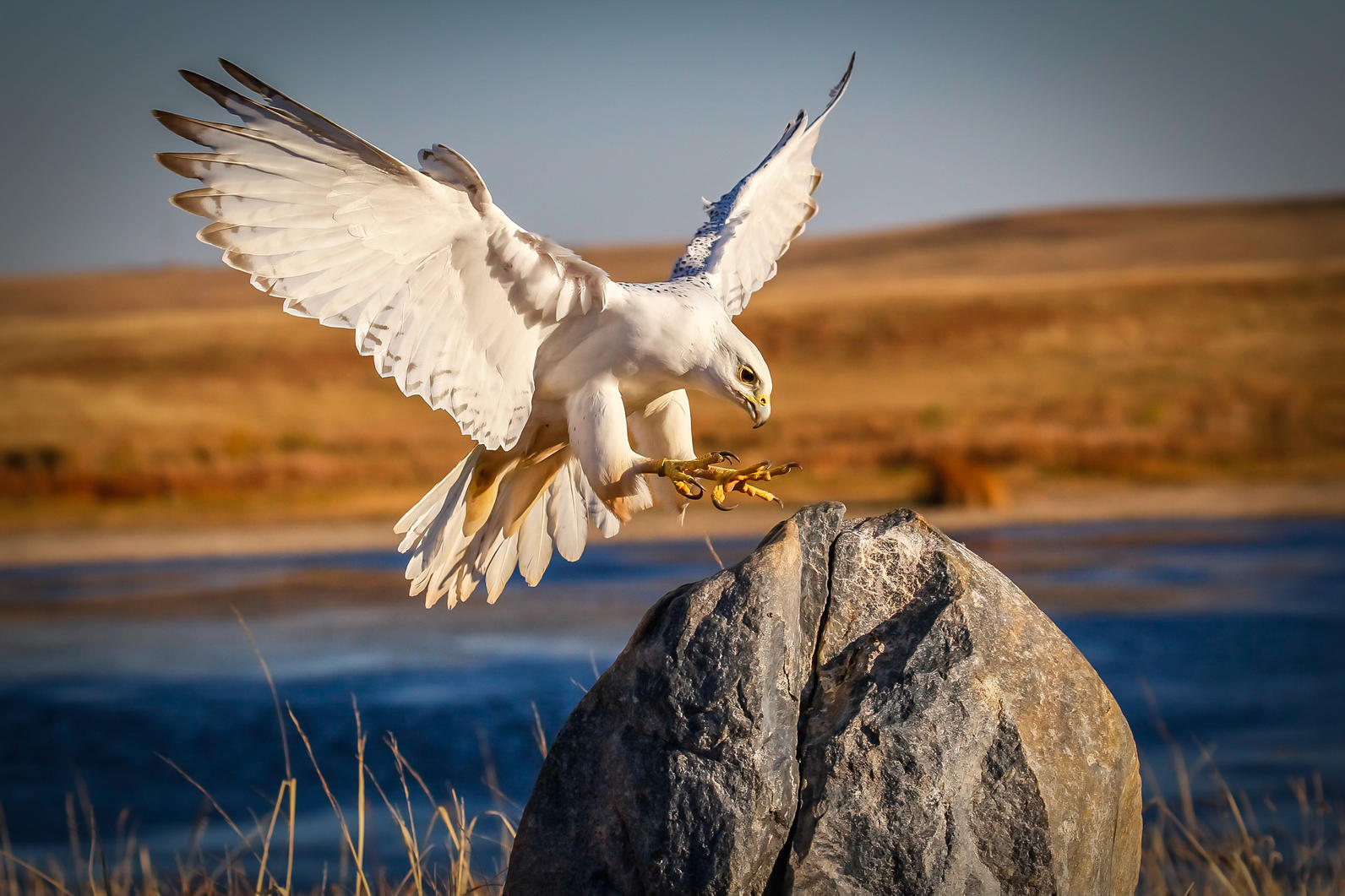
The Colville River rolls along the southeastern boundary of the National Petroleum Reserve–Alaska (NPR–A), carving into the tundra on its way to the Arctic Ocean. The unstoppable flow of water cuts through foothills and soft sand dunes to create cliffs. The ongoing erosion exposes dinosaur fossils and also provides habitat for the descendants of dinosaurs: hawks, falcons, and other birds of prey. In the otherwise flat tundra landscape, the raptors are drawn to the safety and vantage points provided by the relatively tall cliffs. Alongside the bones of their ancestors, these modern-day feathered dinosaurs nest in the cliffs along the Colville River.
Three raptor species that nest in the Colville cliffs are of particular conservation interest. Rough-legged Hawks, named for the feathers that cover their legs like puffy socks, are the most abundant cliff-nesting raptor in the NPR–A. The Arctic Peregrine Falcon is a distinct subspecies with plumage that is paler in tone than that of its southern cousins. Finally, the Gyrfalcon is perhaps the most striking of the Arctic raptors, as the largest of the falcons and a formidable predator of other birds. In addition to these three bird of prey species, Golden Eagles are regular nesters along the Colville River, and the fierce pint-sized falcons called Merlins also breed there in small numbers.
Where the cliffs serve as a nursery for these birds of prey, the nearby tundra is their pantry. The different species of raptors share the use of same hunting grounds. They are able to do this by going after different types of prey. Rough-legged Hawks eat mostly voles and lemmings, with songbirds making up a smaller portion of their diet. In contrast, Peregrines target mostly shorebirds and songbirds and only occasionally capture rodents. Gyrfalcons skip the small animals almost entirely to pursue big fat game birds like ptarmigan.
Raptors do not usually tolerate other predatory birds nesting nearby, but the Colville cliffs offer such good nesting and hunting opportunities in the Arctic that the Colville birds make it work. However, these fiercely solitary birds have not lost their sensitivity to human activity. Anyone who has stumbled near a hawk or falcon nest knows the disturbingly piercing alarm calls and dive-bombs of an angry nesting raptor. The harm to human eardrums and scalps aside, the birds must expend time and energy driving away the intruder, time and energy that are better spent hunting and feeding their young in peace. The few recreational boaters who are intrepid enough to tackle the Colville do not present a big threat. However, encroaching oil and gas development, with its noise and commotion, is a serious emerging concern in the Colville River area.
These feathered denizens of the north occasionally visit those of us who do not live in the Arctic. Rough-legged Hawks leave the Arctic to winter in warmer climates—from Southern Canada to the southern United States. Arctic Peregrines, true wanderers, migrate to the southern U.S. with some going all the way to Argentina. Gyrfalcons remain in the Arctic as long as there are ptarmigan to eat but will depart if the food population declines. In which case, they may show up in northern parts of the U.S. to the delight of local birdwatchers. So, if you see a Rough-legged Hawk, a pale Peregrine Falcon, or a Gyrfalcon near your home, there is a chance that the bird was hatched on the Colville River and will return there in the summer to raise its own chicks. Take the opportunity to raise your binoculars and look deep into the dark eyes of a raptor that may have borne witness to the timeless landscape of the Colville River in Alaska’s Western Arctic.



